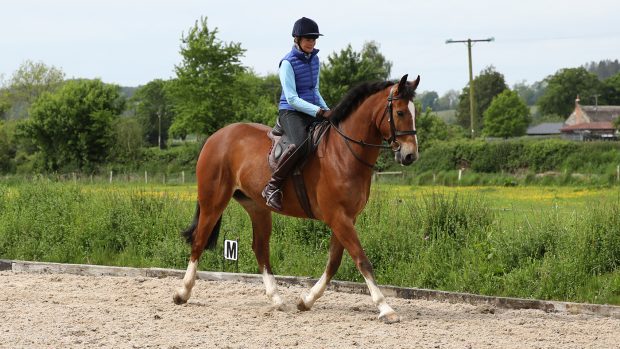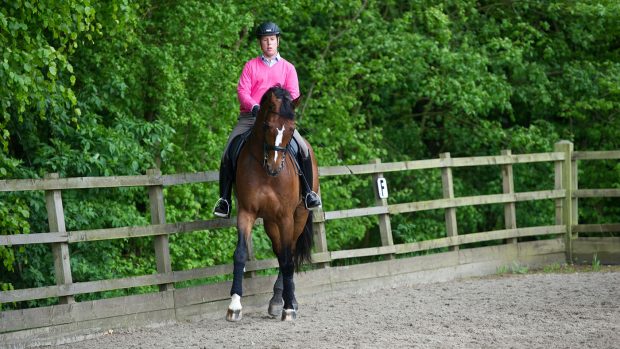Show producer Sam Quiney (pictured) gives her advice on how she encourages her young horses to use their hindlegs correctly when schooling at home
*NB: the latest recommendation from the British Equestrian Federation is “not to ride” but we hope this article will be prove useful to readers when the current coronavirus restrictions are lifted*
Sam Quiney and her husband Julian have been producing show animals for the past 24 years. At the Horse of the Year show (HOYS) this year they produced three winners — Royal Engagement, Gryngallt Page Too and Little Miss Darcey — from a small yard in Somerset. The couple have now joined Vanessa Ramm in Northumberland for the foreseeable future.
Training the stars
We produced Royal Engagement for seven years before his retirement at HOYS in October. When schooling him before a show we would always work on bending exercises and leg-yielding. This would soften his front end and engage his hindleg.
From the beginning of a horse’s education, the two main aims are to get him going forward and working correctly from behind. You want the horse to place his hindleg underneath him so he can propel himself forward in a balanced and naturally collected outline.
True self-carriage comes from behind. I see so many ponies forced into a false head carriage — they are often over bitted and run too fast off their feet, which can result in hollowness through the back and trailing hocks.
Providing your horse is at a stage in his education at which he’s going forward freely and is confident through transitions, you can try the following exercises.
Tackling the issue
1. Ride a 20-metre circle in each pace — walk, trot and then canter. Ride downwards transitions while staying on the circle as this will encourage the horse to engage his hocks through the transition.
2. Ride large around the arena. Use your outside leg to move the horse on to a smaller circle and then go large again using your inside leg. You can ride this exercise in any gait, but you must keep using forward propulsion.
3. Serpentines are a really useful exercise for working on straightness and changing the bend. Start in trot and ride serpentines with varying numbers of loops to help keep it interesting for the horse. The frequent changes of bend in a serpentine will encourage relaxation of the main muscle groups your horse engages as he bends.
4. Simple lateral work, such as leg-yielding, improves straightness, suppleness and acceptance of the aids. Your inside leg asks the horse to move to the side, while your outside leg maintains straightness and forward motion. The inside rein asks for slight flexion, while the outside rein helps maintain straightness and tempo.
5. All these exercises encourage the horse to flex his hocks. Riding exercises on a bend means that the outside hindleg takes a larger stride and the inside hindleg a smaller one. This encourages full movement of all joints, improving suppleness and strength. Introduce movements slowly and avoid asking for too much at once, as a young horse may not be strong in his back.
Article continues below…
You might also be interested in:

#SundaySchool: ultimate suppleness and engagement with a top dressage rider
Sarah Millis (pictured), an international dressage rider, explains how you can improve the quality and rhythm of the trot by

Subscribe to Horse & Hound magazine today – and enjoy unlimited website access all year round
Things to consider…
- Your horse’s conformation may affect how long it takes to teach him how to come through from behind properly — for example, if he’s slightly long through the back it will take longer.
- If your horse is not responding as expected to the exercises, ask your vet to check there isn’t anything physically wrong.
Would you like to read Horse & Hound’s independent journalism without any adverts? Join Horse & Hound Plus today and you can read all articles on HorseandHound.co.uk completely ad-free.




